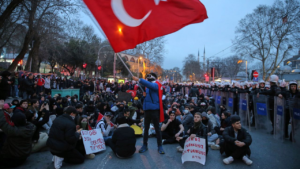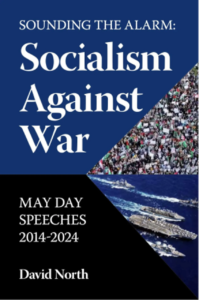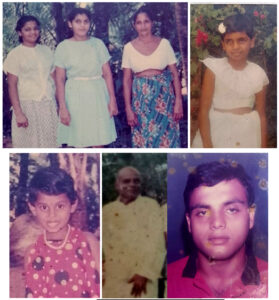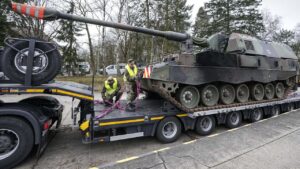By Sanjaya Jayasekera.
In “My Thoughts on Handagama’s Rani,” published in Daily FT on March 281, Jagath Weerasinghe—artist, archaeologist, and cultural commentator—extends, rationalises, and legitimises the central reactionary thesis of Asoka Handagama’s recent film Rani. This is a film whose underlying narrative, presented in the guise of artistic subtlety and aesthetic ambiguity, represents a deeply ideological falsification of history. Weerasinghe’s endorsement of the director’s central proposition2—reproduced in Sinhala translation in Anidda on March 30 by Vidura Munasinghe—is emblematic of a broader trend among the middle-class intelligentsia and the pseudo-left, who serve as ideological apologists for the crimes of the capitalist state.

The core thesis promoted by both Weerasinghe and the film is that the atrocities carried out during the 1988–90 period—enforced disappearances, state death squads, mass graves, torture camps, and extrajudicial killings, as well as the fascistic violence perpetrated by the Janatha Vimukthi Peramuna (JVP)—were not the products of concrete political decisions, class interests, and specific agencies of state and party power. Instead, they were the result of a society in which “violence had become systemic and normalised.” Weerasinghe writes: authoritarian regimes perpetuate brutality “for political gain and self-preservation, creating an environment where violence is not only carried out by those in power but is also internalised, accepted, and even participated in by ordinary citizens. In such a climate, even those with moral integrity can find themselves complicit—whether through silence, fear, or the gradual erosion of ethical boundaries.”
This pseudo-sociological claim—that violence was embedded in the very fabric of society and was collectively enacted by the masses—leads to a profoundly reactionary conclusion: that there is a shared moral guilt for the crimes of the period, borne by everyone, without any class distinction. Rani—the eponymous protagonist, who is portrayed as initially a passive observer of the surrounding terror but who gradually becomes emotionally and psychologically implicated—and every other defenseless rural man and woman, the worker, the unemployed youth, who were terrorized for their lives both by the fascism of the JVP and by state repression, are depicted as responsible for and willing participants in the atrocities.
Was this culpability moral, political, or both? While Weerasinghe leaves no doubt that he intends to assign moral culpability to the masses—an implication clearly shared by the director—this vulgar theory leaves the spectator wondering who bears political accountability. That is precisely the issue at hand. The film and its director’s apologetics place the blame on the “ordinary” masses. Political responsibility follows moral culpability. Consequently, the oppressed are identified with the oppressor, giving rise to a vision of a society that is hopeless, anarchic, and devoid of historical or scientific grounding. This approach is crudely ahistorical, impressionistic, and unscientific—and it serves a definite class interest.
The capitalist state agents of terror, its political leadership, the military-intelligence apparatus, and the misdirected cadre of the JVP are equated, and these contradictory forces are placed on the same grounds as the poor and the working people, constituting a homogeneous society of “ordinary citizens.” They are all morally and indiscriminately dissolved into an amorphous, classless “we.” The final anecdote of the film, which Weerasinghe refers to, is founded upon this proposition and leads to the conclusion that the director wanted the viewers of his film to read into as the alternative narrative: the killing of Richard de Soysa was not necessarily ordered by President R. Premadasa, nor did it serve the interests of the latter or the ruling class. This is a liquidationist proposition that casts doubt upon many other suspected assassinations and abductions of the period, getting the political leadership of the state off the hook. In conclusion, this is where the “broader and more layered exploration of the underlying social and political realities,” which Weerasinghe claims the purported “fiction” allows its viewer to delve into, lands.
Such a political framework is not new. It has appeared time-to-time in bourgeois and petty-bourgeois historiography, where the responsibility for state crimes—pogroms, wars, genocides—is shifted onto “society” or “human nature.” One prominent historical analogue is Daniel Goldhagen’s Hitler’s Willing Executioners: Ordinary Germans and the Holocaust (1996), which absurdly claimed that the Holocaust was not the outcome of a historically developed political program of German imperialism and the fascist state of the Nazi Third Reich, but the result of a deep-seated, inherent antisemitism among the German people3. Thus, the “ordinary” Germans were willing accomplices in the Final Solution, the extermination of over six million Jews. Hitler was only the final executioner of this ideology. This deadly distortion of history has been widely discredited by serious historians, not only for its factual inaccuracy, but for the reactionary political implications it carries4.
Weerasinghe offers no sociological or historical research to substantiate his claims—nor does the director, who admits to conducting little serious investigation prior to the making of the film. However, similar arguments have been advanced internationally through certain psychological and sociological theories that lack rigorous empirical grounding. Chief among these are the studies of Stanley Milgram and Philip Zimbardo, whose respective experiments on obedience to authority and simulated prison environments have been widely cited to suggest that ordinary individuals can become complicit in acts of cruelty under systemic pressure. Both studies have come under sustained criticism for methodological shortcomings, ethical violations, and issues of reproducibility. More importantly, when abstracted from their immediate experimental context and applied uncritically to complex social phenomena like mass political violence, these theories devolve into a kind of psychological determinism. They obscure the class forces and political programs that shape historical events and instead offer a right-wing, pseudo-scientific narrative in which atrocities are the inevitable result of human nature or diffuse social norms—thereby absolving the state and the ruling elite of political responsibility.
In the Sri Lankan context, this argument has especially reactionary consequences. It leads to the notion that the Sinhalese majority are collectively responsible for the 1983 pogrom against Tamils, and ultimately, for the genocide in Mullivaikkal in 2009. A section of the middle class of the country harbours this ideology, which was once starkly expressed by Pubudu Jayagoda, a leader of the pseudo-left Frontline Socialist Party (FSP), who claimed that racism is deeply ingrained in the Sinhalese “society”5, reducing complex political phenomena to abstract moral failures of entire ethnic groups of conflicting classes6. This is not only unscientific and historically false, but it plays directly into the hands of the capitalist state and chauvinist forces, who exploit communalism to divide the working class on racialist lines to prevent unified struggle.
Marxism begins not with moralism, but with the concrete analysis of social relations and historical processes. The essential questions that must be addressed in any serious assessment of the 1988–90 period are the following: What were the objective causes of the JVP-led insurrection and its fascistic methods? What class forces were involved in the repression? What was the role of imperialism, the IMF, and the Sri Lankan bourgeoisie in creating the social crisis that produced this violence? And above all, was there an alternative revolutionary leadership that could have mobilized the working class against both the JVP and the capitalist state?
The JVP uprising was not a spontaneous eruption of madness, nor was it the inevitable product of a culture of violence. It emerged from a deep social crisis rooted in the failure of the post-colonial bourgeoisie and the betrayal of the Lanka Sama Samaja Party (LSSP) in 1964, which had entered into a class collaborationist coalition with the bourgeois Sri Lanka Freedom Party (SLFP). In the aftermath of this betrayal, tens of thousands of rural youth—disillusioned by the parliamentary left and devastated by the economic liberalization policies of the J. R. Jayewardene regime—were drawn to the radical rhetoric of the JVP.
The JVP, despite its populist posture, was never a Marxist organization. It rejected the class struggle, dismissed the internationalism of the Fourth International, and relied on petty-bourgeois nationalism and adventurist terror. In 1987–89, it launched a campaign of assassinations and fascistic violence that paralyzed the working class and the middle class. The response of the state was a campaign of ruthless repression. Death squads, torture camps such as Batalanda, and state-sponsored terror claimed the lives of an estimated 60,000 youth.
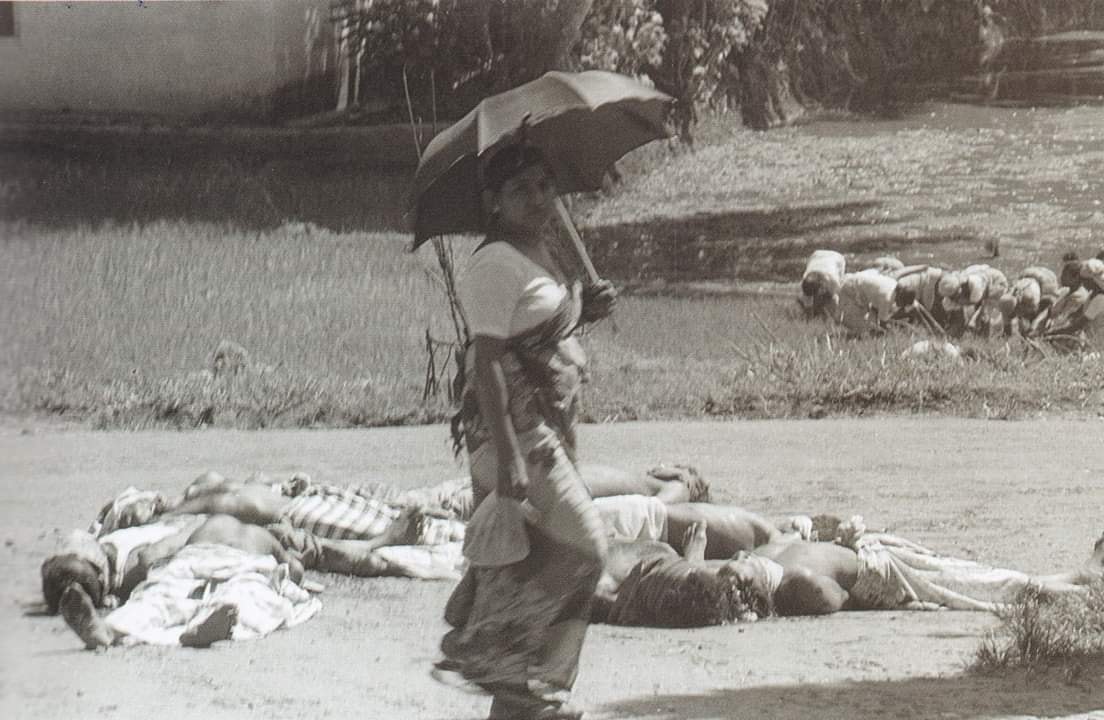
This was not a case of generalized ”ideology of violence” within society. It was class warfare, waged from above by the capitalist state to defend private property, intimidate the working class, and preserve bourgeois rule. It was facilitated by the political vacuum created by the betrayals of the old left and the inability of the Revolutionary Communist League (RCL), the predecessor of the Socialist Equality Party (SEP), to politically break the working class and the rural poor from the grip of the petty-bourgeois JVP and other Stalinist and Maoist organizations in time to develop an alternative mass leadership.
However, it was only the RCL, the Sri Lankan section of the International Committee of the Fourth International (ICFI), the world party of the working class, which alone insisted that the fascist violence of the JVP and the state terror could only be opposed by the independent political mobilization of the working class on a socialist and internationalist program. In November 1988, in order to mobilize the independent power of the working class, it called for a united front of working-class organizations to fight both state repression and JVP fascism, as an immediate practical measure. Instead of supporting this effort, the LSSP, the Communist Party (CP), Nawa Sama Samaja Party (NSSP), and Ceylon Workers’ Congress (CWC) aligned themselves with the terror of the UNP regime, which armed them against the JVP. This betrayal aided the state in unleashing mass repression on the rural poor of the South and launching its racist war against the oppressed Tamil people.
None of these dynamics are on the historical balance sheet of those who seek to “push” the contemporary youth “to the very edges of these established frameworks.”
Today, the pseudo-left has once again emerged as a shield for the ruling class, which has endorsed the JVP/NPP as its saviour. The JVP-led NPP is using its parliamentary position not to uncover or prosecute the war crimes of the past, but to bury them. Its recent tabling and debating of the Batalanda Commission report—gathering dust for over two decades—is a cynical gesture meant to divert public attention from IMF austerity measures. The NPP is objectively poised not to challenge the military, nor the UNP, nor the interests of imperialism. It fears that any real reckoning with the crimes of 1988–90 will expose not only the state, but the politics of the JVP itself.
The working class and rural poor must reject the “common guilt” thesis advanced in Rani and promoted by figures like Weerasinghe. They must demand justice based not on emotional reconciliation, but on historical truth and political accountability7.
Neither of these are possible within the capitalist state. It requires the building of a revolutionary socialist movement of the working class to finally break the grip of imperialism, overturn the legacy of terror, and unify the oppressed—Sinhala, Tamil, and Muslim—on the basis of a common struggle against exploitation.
The film’s thesis, and Weerasinghe’s article by extension, constitute an aestheticized historical falsification, a rebranding of a reactionary historical revisionism in the garb of “critical reflection.” The function of art, if it is to be progressive, is not to obscure these truths but to clarify them. Rani fails in this most fundamental task. It replaces history with impressionism, class analysis with pseudo-science, and revolutionary clarity with reactionary confusion.
- My Thoughts on Handagama’s Rani, Jagath Weerasinghe, Daily FT on March 28, 2025. <https://www.ft.lk/columns/My-thoughts-on-Handagama-s-Rani/4-774887>
↩︎ - Anidda, February 2, 2025, A discussion with Ashoka Handagama by Upali Amarasinghe, p19.
↩︎ - ‘[A]ntisemitism moved many thousands of “ordinary” Germans—and would have moved millions more, had they been appropriately positioned—to slaughter Jews. Not economic hardship, not the coercive means of a totalitarian state, not social psychological pressure, not invariable psychological propensities, but ideas about Jews that were pervasive in Germany, and had been for decades, induced ordinary Germans to kill unarmed, defenseless Jewish men, women, and children by the thousands, systematically and without pity.’ Daniel Goldhagen, Hitler’s Willing Executioners: Ordinary Germans and the Holocaust, (New York: Alfred A. Knopf, 1996), p. 9.
↩︎ - The Myth of “Ordinary Germans”: A Review of Daniel Goldhagen’s Hitler’s Willing Executioners, David North (April 1997) in The Russian Revolution and the Unfinished Twentieth Century (2014). <https://www.wsws.org/en/special/library/russian-revolution-unfinished-twentieth-century/15.html>
↩︎ - <https://www.facebook.com/reel/3824881814291061?sfnsn=wa&mibextid=6AJuK9> ↩︎
- Race, class and social conflict in the United States, Niles Niemuth, SEP Summer School Lecture 2021, <https://www.wsws.org/en/articles/2021/09/06/race-s06.html>
↩︎ - Batalanda Slaughter Chambers and the Mass Graves: The class roots of crimes against the poor and the working class of Sri Lanka, Sanjaya Jayasekera, March 23, 2025, <https://www.thesocialist.lk/batalanda-slaughter-chambers-and-the-mass-graves-the-class-roots-of-crimes-against-the-poor-and-the-working-class-of-sri-lanka/>
↩︎

